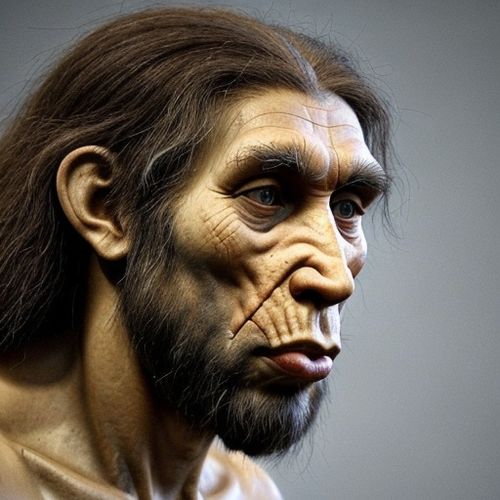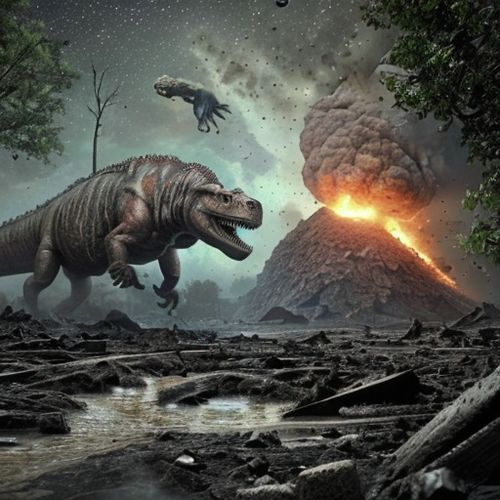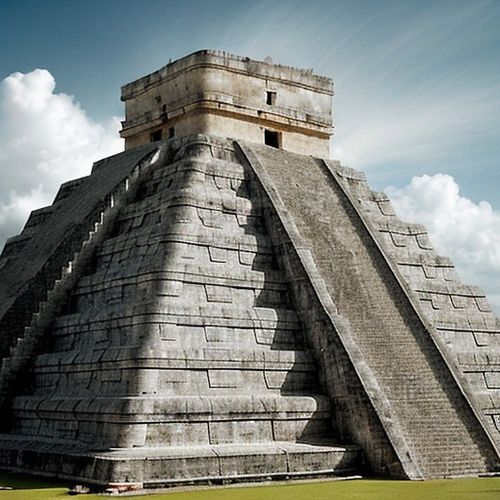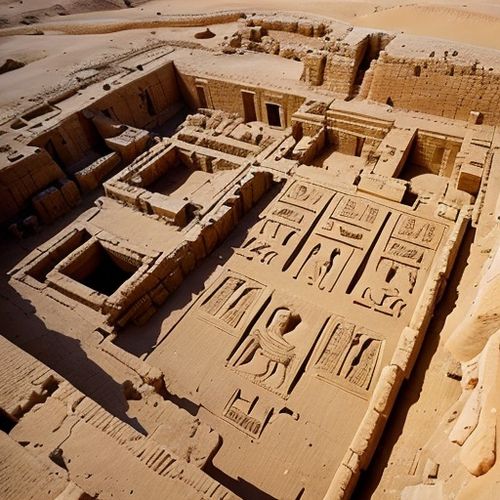The extinction of the dinosaurs has long been one of the most captivating mysteries in Earth's history. For decades, scientists have debated the causes behind the sudden disappearance of these colossal creatures. While the asteroid impact theory has gained widespread acceptance, new evidence suggests that the aftermath of the collision may have been even more catastrophic than previously thought. Recent studies indicate that the asteroid strike not only caused immediate devastation but also triggered prolonged global acid rain, further decimating ecosystems and contributing to the mass extinction event.
The Chicxulub Impact and Its Immediate Consequences
Approximately 66 million years ago, a massive asteroid, estimated to be about 10 kilometers in diameter, struck the Earth near what is now the Yucatán Peninsula in Mexico. The impact, known as the Chicxulub event, released energy equivalent to billions of atomic bombs, creating a crater over 150 kilometers wide. The immediate effects were apocalyptic: wildfires raged across continents, tsunamis hundreds of meters high swept across oceans, and vast amounts of dust and debris were ejected into the atmosphere, blocking sunlight for months or even years.
This period of darkness, often referred to as a "nuclear winter" scenario, disrupted photosynthesis, causing the collapse of plant life and, consequently, the food chains that depended on it. However, while these effects were devastating, they alone may not fully explain the scale of the extinction. This is where the new research on acid rain comes into play.
The Role of Sulfur in Global Acid Rain
One of the critical components of the asteroid's impact site was the presence of sulfur-rich rocks. When the asteroid struck, it vaporized these rocks, releasing enormous quantities of sulfur compounds into the atmosphere. These compounds, primarily sulfur dioxide (SO₂), reacted with water vapor to form sulfuric acid (H₂SO₄), which then fell back to Earth as acid rain.
The scale of this acid rain would have been unprecedented. Unlike localized acid rain caused by volcanic activity, the Chicxulub impact would have generated a global deluge of acidic precipitation. The pH levels of rainwater could have dropped dramatically, making it as acidic as lemon juice in some regions. This would have had severe consequences for both terrestrial and marine ecosystems.
Effects on Terrestrial Life
On land, the acid rain would have leached essential nutrients from the soil, making it infertile and unable to support plant life. Even hardy plants that survived the initial darkness would have struggled to grow in such hostile conditions. Herbivorous dinosaurs, already weakened by the lack of food, would have faced further starvation, and their predators would have followed suit.
Additionally, the acid rain would have directly harmed animals. Many species, particularly those with sensitive skin or respiratory systems, would have suffered burns or other injuries from the acidic precipitation. Smaller creatures, including early mammals and birds, may have had a slight advantage due to their ability to seek shelter, but even they would have faced immense challenges.
Marine Ecosystems Under Siege
The oceans would not have been spared. Acid rain would have lowered the pH of surface waters, affecting marine organisms, particularly those with calcium carbonate shells or skeletons, such as plankton, mollusks, and corals. These organisms form the base of the marine food web, and their decline would have had cascading effects throughout the ocean.
Moreover, the acidification of freshwater systems would have been equally devastating. Lakes and rivers would have become inhospitable to many species, disrupting freshwater ecosystems and further reducing the available food sources for surviving animals.
A Prolonged Catastrophe
What makes the acid rain theory particularly compelling is that it explains how the effects of the asteroid impact could have persisted long after the initial event. While the dust and soot in the atmosphere would have settled within a few years, the sulfur compounds could have remained in the atmosphere for decades, continuously generating acid rain and prolonging the environmental crisis.
This prolonged period of stress would have given ecosystems little chance to recover. Even species that survived the initial impact would have faced relentless pressure, making it increasingly difficult for them to adapt or repopulate. This could explain why the extinction event was so thorough, wiping out not just the dinosaurs but also around 75% of all species on Earth.
Implications for Modern Science
The discovery of acid rain's role in the dinosaur extinction offers more than just a glimpse into the past; it also provides valuable insights into the potential consequences of modern environmental threats. Today, human activities are causing ocean acidification and localized acid rain due to industrial emissions. While the scale is nowhere near that of the Chicxulub impact, the parallels are striking.
Understanding how acid rain contributed to one of Earth's most significant extinction events underscores the importance of addressing current environmental challenges. It serves as a stark reminder of how delicate ecosystems can be and how quickly they can collapse under extreme stress.
Conclusion: A Multifaceted Extinction
The dinosaur extinction was not the result of a single catastrophic event but rather a combination of interconnected disasters. The asteroid impact was the catalyst, but the ensuing acid rain, along with other factors like wildfires and climate change, created a perfect storm of destruction. This new evidence highlights the complexity of mass extinctions and the myriad ways in which life on Earth can be threatened.
As scientists continue to uncover new details about this ancient catastrophe, the story of the dinosaurs' demise becomes ever more nuanced. It is a tale of resilience and fragility, of sudden violence and slow suffocation—a reminder of the dynamic and often unforgiving nature of our planet.

By Victoria Gonzalez/Apr 10, 2025

By Joshua Howard/Apr 10, 2025

By Noah Bell/Apr 10, 2025

By Emily Johnson/Apr 10, 2025

By Eric Ward/Apr 10, 2025

By Megan Clark/Apr 10, 2025

By Samuel Cooper/Apr 10, 2025

By Daniel Scott/Apr 10, 2025

By Emma Thompson/Apr 10, 2025

By Rebecca Stewart/Apr 10, 2025

By Lily Simpson/Apr 10, 2025

By John Smith/Apr 10, 2025

By John Smith/Apr 10, 2025

By Samuel Cooper/Apr 10, 2025

By John Smith/Apr 10, 2025

By Rebecca Stewart/Apr 10, 2025

By Joshua Howard/Apr 10, 2025